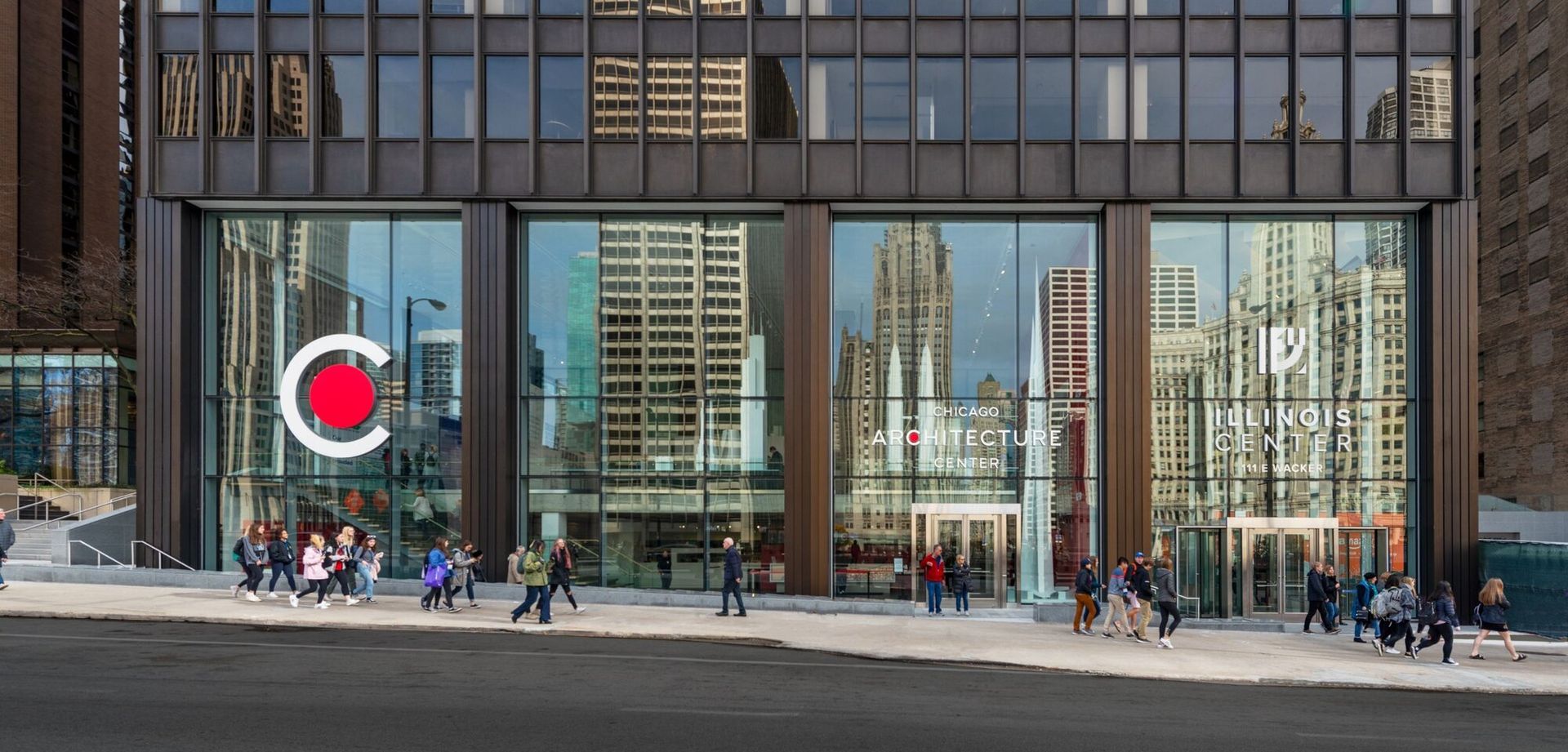
OUR HISTORY
The Chicago Architecture Center, originally the Chicago Architecture Foundation, has evolved over the years to become a leading institution in architectural education and public programs.
The Chicago Architecture Center, originally the Chicago Architecture Foundation, has evolved over the years to become a leading institution in architectural education and public programs.
Our mission is to inspire people to discover why design matters.
The Chicago Architecture Center (CAC) was founded in 1966 as the Chicago Architecture Foundation to save the historic Glessner House. Since then, the CAC has grown to become one of the largest cultural organizations in Chicago. For nearly 60 years, 450 educator volunteers including docents, exhibit hosts and education guides have shared the stories of Chicago architecture with millions of Chicagoans and visitors. The CAC serves approximately 500,000 guests and audience members annually.
Visit the CAC at 111 E. Wacker Dr. to view our 4,250-building scale model of Chicago, shop in our award-winning store or participate in a fun family event in our ArcelorMittal Design Studio. Or choose from 80+ tours by boat, walking, bus or “L” train. Tours depart daily and are led by CAC's expert, volunteer docents. Every October, check out the CAC's free annual Open House Chicago festival.
Proceeds from the CAC’s tours and store, as well as grants, sponsorships and donations, support our educational mission.
Our Vision
The Chicago Architecture Center is the leading organization devoted to celebrating and promoting Chicago as a center of architectural innovation. As Chicago’s forum for the exchange of ideas on urban design, the CAC inspires people to participate in the building of vibrant communities and to demand the highest standard in urban design. The CAC awakens young people to achieve their potential through the discovery of architecture, engineering and design.
50 Year History of the Chicago Architecture Foundation
In 2016, as CAC turned 50, we took a look at some of the defining milestones reached along the way. Since its founding days at Glessner House in 1966, CAC has been sharing the stories behind the buildings. We’ve strived for more than half a century to inspire people to discover why design matters in their communities, cities and lives.
CAC's HISTORY
1966
A group of volunteers joins together to save H. H. Richardson's Glessner House from demolition. This effort led to the founding of the Chicago Architecture Foundation.
1971
The first class of 33 docents graduates from the CAF training program and begins to lead walking tours.
1982
The Newhouse Architecture Competition for high school students begins.
1983
CAF launches the first river cruise about architecture.
1992
CAF moves to the Railway Exchange Building at 224 S. Michigan Avenue.
1993
The Chicago Architecture Center River Cruise aboard First Lady is born! Still running today, the river cruise is consistently voted the #1 tour in Chicago, and in North America.
2002
The award-winning "Schoolyards to Skylines" K-8 curriculum is published.
2009
The 320-square-foot Chicago Model is completed, featuring 400 blocks of the city and more than 1,000 Chicago buidings in miniature.
2011
CAF hosts the inaugural Open House Chicago, a free citywide weekend festival - now the largest architecture event in the country.
2014
The ArcelorMittal Design Studio opens to serve as a collaborative learning space for students and families. LEGO donates 500,000 bricks for use in the space.
2018
The Chicago Architecture Center opens at 111 E. Wacker. With exhibitions, programs and events, the Center is a hub for all things architecture and a starting point for many tours.
Our Commitment to Diversity, Equity, inclusion & Accessibility
CAC is committed to providing a safe, welcoming and inclusive environment for its staff, volunteers and visitors. We recognize and value the unique life experience that every individual brings to our organization, and the need to include and reflect diverse voices in CAC content and programming, especially those from historically excluded populations. We will uphold this commitment starting from within, by:
- Building a culture of accountability and sharing, with opportunities for self-reflection.
- Educating ourselves about BIPOC histories, systemic racism, implicit bias and the need to adopt anti-racist actions.
- Creating brave spaces for staff to safely discuss thoughts and feelings about injustice, micro-aggressions or prejudiced behavior in constructive ways.
- Seeking to remove barriers to the recruitment, retention, and advancement of talented staff and volunteers from historically excluded populations who are currently underrepresented.
- Pursuing external input and feedback to incorporate inclusion into CAC’s strategic plan and organizational, departmental, and individual performance goals.
